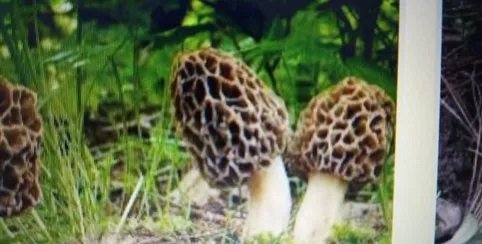Guchhi/ Morechella Mushroom
Introduction
Morchella holds immense significance from various perspectives such as economical, social, and ethno-mycological. It plays a crucial role in the lives of the people residing in the Himalayas, particularly those living near by forest. It serve as a primary source of income for rural communities, supporting their livelihoods. Himalayan countries like Nepal, Bhutan, China, and India has the potential to emerge as a leading global producer of top quality Morchella.
The species are also known as true morels, are distinguishable from false morels, which belong to the Verpa genus, as well as various species of the Gyromitra genus. These mushrooms are typically found in temperate forests with both coniferous and broad-leaved trees across the world.
In the Tibetan Plateau, morels are referred to as “gugu shamu,” meaning the “cuckoo,” as they fruit when the cuckoo bird returns in spring. In Nepal, they are commonly known as Khoya Chyau, Guchhi Chyau, Phuikhane Chyau, and Chhohada Chyau among different communities.
Wild types encompasses at least 72 species and 352 isolates, including subspecies, with a majority being specific to certain regions and displaying significant levels of endemism in the Northern Hemisphere.
With their hollow interior and spongy texture, they are renowned for their unique savory and “meaty” flavor. They are typically consumed fresh or used as a flavoring agent after processing. Apart from their prized sensory properties, morels are rich in proteins, fibers, vitamins, and minerals, while being low in carbohydrates and fats. Notably, it contain higher levels of potassium, zinc, and selenium compared to many other common mushrooms. In addition to their nutritional value, the bioactive compounds present in it, such as polysaccharides, phenolics, tocopherols, and ergosterols, contribute to their benefits and make them a potential functional food in the field of nutraceuticals and pharmaceuticals.


Nutrients Content in Morel
Nutrient Contents
The total calories of 100 g morels in dry weight ranged from 355.6–386.5 kcal, with 7.5–35.8 g/100 g protein, 2.3–12.0 g/100 g fat, 36.8–80.5 g/100 g carbohydrate, 6.7–18.2 g/100 g ash, 8.5–44 g/100 g total sugar, and 4.8–28.8 g/100 g crude fiber. It also contains bio-active compounds like polysaccharides, phenolic, tocopherols, ergosterol along with this it also acts as anti-oxidative activities, anti-colon cancer effects, anti-inflammatory effects, immune-protective effects, anti-tumor effects, anti-lung cancer effects, and gut health protective effects.
They contains a lot of vitamin D. They are also a low-fat, plant-based food that makes a great addition to a heart-healthy diet as an ingredient or as a meat substitute. Adding more plant foods to your diet can lower your cholesterol, give you more energy, and supplement your diet with a wealth of nutrients. They contains lots of antioxidants that are good in protecting your body from free radicals.
Health Benefits of Morchella
The health benefits include supporting immune functions, providing antioxidant protection, preventing cardiovascular diseases (CVD), and maintaining digestive heath. The health advantages encompass bolstering immune functions, offering antioxidant protection, averting cardiovascular diseases (CVD), and upholding digestive health. The free radicals found in Morchella are often the cause of heart diseases, Parkinson’s disease, Type 1, and Type 2 Diabetes. The antioxidants in it help in removing harmful molecules in your body called reactive oxygen species. The liver is responsible for removing all the toxins in the body and plays a crucial role in our health.
This ‘day-in-age’ our livers are taxed more than ever by all the chemicals in the food and water. Carbon Tetrachloride (CCl4) is an inorganic compound that was found to be causing issues with our kidneys and central nervous system. Various studies have shown that CCL4 with ethanol can damage one’s liver. However, extract of morel mycelium was found to be enough to provide protection against liver damage from CCL4. In Nepal different species are marketed from Karnali province of Nepal to different countries.
It is weight as Laal Tolaa in Nepal like as measurement unit of gold.
The health benefits of Morchella includes anti-oxidative activities, anti-colon cancer effects, anti-inflammatory effects, immune-protective effects, anti-tumor effects, anti-lung cancer effects, aut health protective effects.
The total calories of 100 g morels in dry weight ranged from 355.6–386.5 kcal, with 7.5–35.8 g/100 g protein, 2.3–12.0 g/100 g fat, 36.8–80.5 g/100 g carbohydrate, 6.7–18.2 g/100 g ash, 8.5–44 g/100 g total sugar, and 4.8–28.8 g/100 g crude fiber. It also contains bio-active compounds like polysaccharides, phenolic, tocopherols, ergosterol

